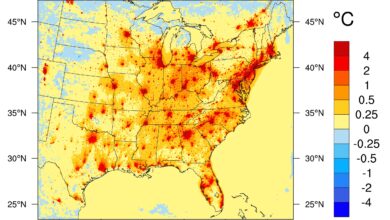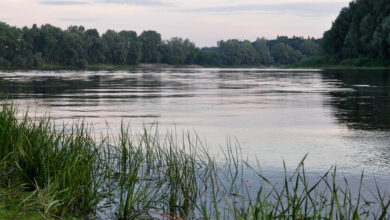Claim: Arctic climate modeling is too conservative

[It’s been a while since we’ve had a good “It’s Worse Than We Thought” story~cr]
GOTHENBURG UNIVERSITY
CREDIT: PHOTO: CÉLINE HEUZÉ
Because of the Arctic’s sea ice cover and its harsh climate, relatively few observations have been made in that part of the world. This means that climate models used to predict the future of the Arctic have not been calibrated to the same extent as in other parts of the world.
Two recent scientific studies involving researchers from the University of Gothenburg compared the results of climate models with actual observations. They conclude that the warming of the Arctic Ocean will occur at a much faster rate than predicted by climate models.
Climate models underestimate the consequences
“These climate models underestimate the consequences of climate change. In fact, the relatively warm waters of the Arctic regions are even warmer and closer to sea ice. Therefore, we believe that the Arctic sea ice will melt faster than expected,” explains Céline Heuzé, a climatologist at the University of Gothenburg and lead author of one of the studies.
Warm water flows into the Arctic Ocean through the Fram Strait between Greenland and Svalbard. However, the amount of water in these currents and its temperature in climate models is too low, which is one of the reasons that the forecasts of climate models will be inaccurate. Even the stratification of the Arctic Ocean is imprecise. The researchers argue that because about half of the models predict an increase and the other half a decrease in stratification, it is not possible to accurately estimate the consequences of global warming.
Hard data collection in the Arctic must be a priority
“This is a serious situation. If governments and organizations worldwide are going to rely on these climate models, they must be improved. That is why research and data collection in the Arctic Ocean must be a priority. Currently, we cannot make useful predictions about the rate of melting of sea ice in the Arctic,” explains Céline Heuzé.
The Arctic is an important region for predicting future intensity of global warming. Its sea ice contributes to the albedo effect – a white surface that reflects sunlight off the planet. If the ice disappears, more solar radiation will reach Earth.
“We need a climate model suitable for the Arctic. In general, you cannot use the same model for the entire planet because the conditions are significantly different. Céline Heuzé explains that a better idea would be to create a model specific to the Arctic, the exact factor in the processes occurring in the Arctic Ocean and surrounding land areas.
MAGAZINE
Climate Magazine
DOI
RESEARCH METHODS
meta-analysis
ARTICLE TITLE
Arctic Deep Sea and Fram Strait in CMIP6 . models
ARTICLE PUBLICATION DATE
4-Jan-2023




